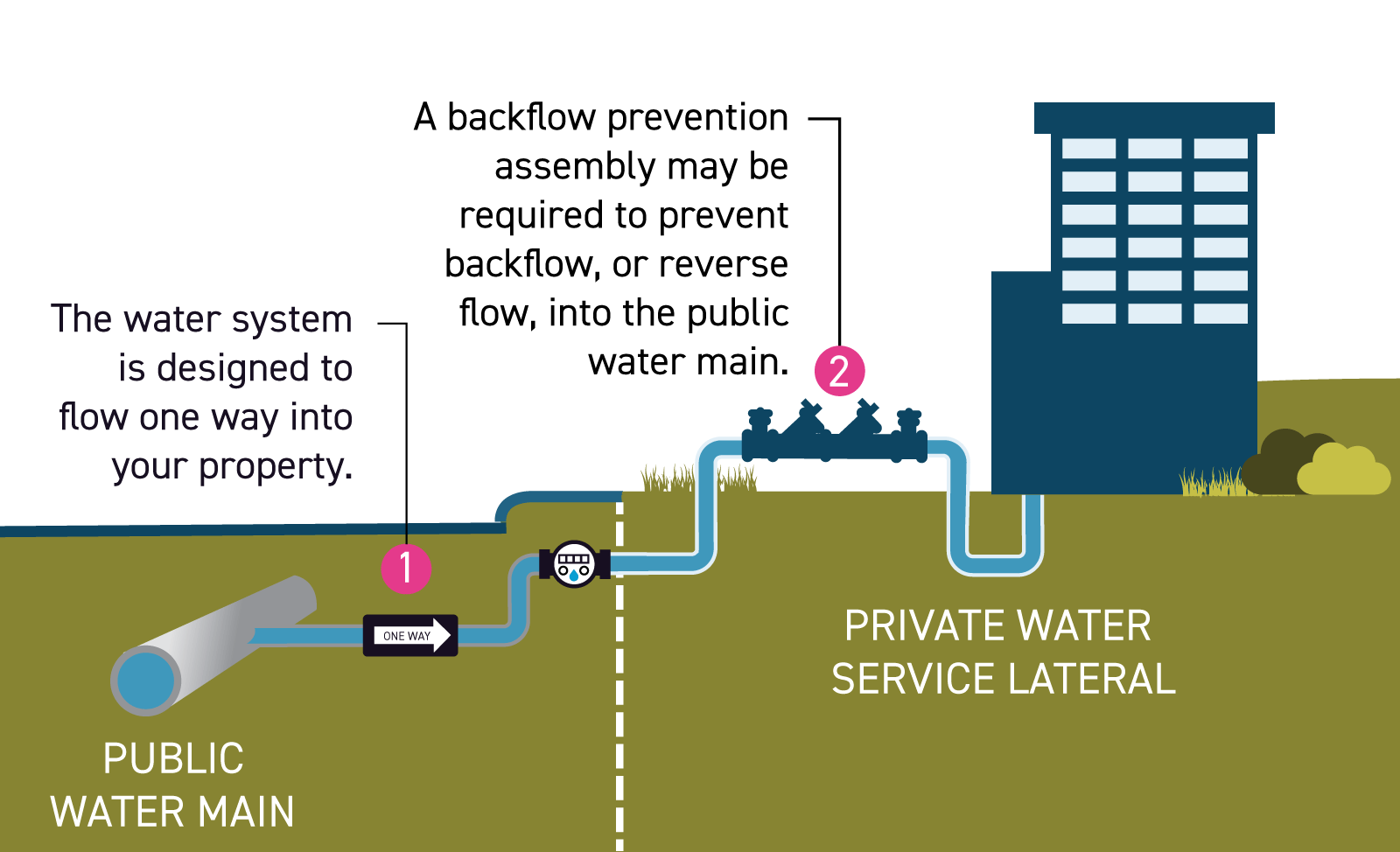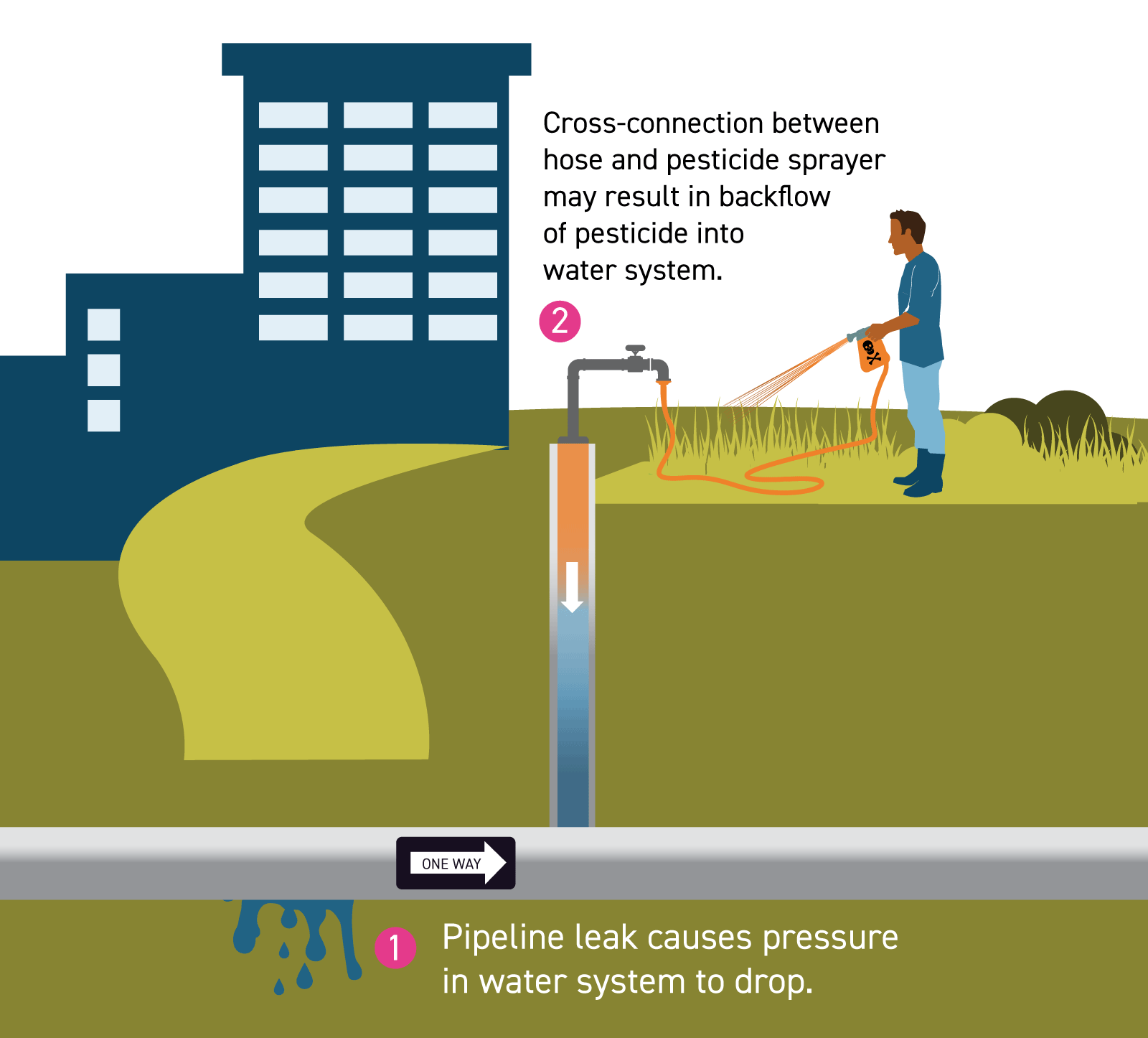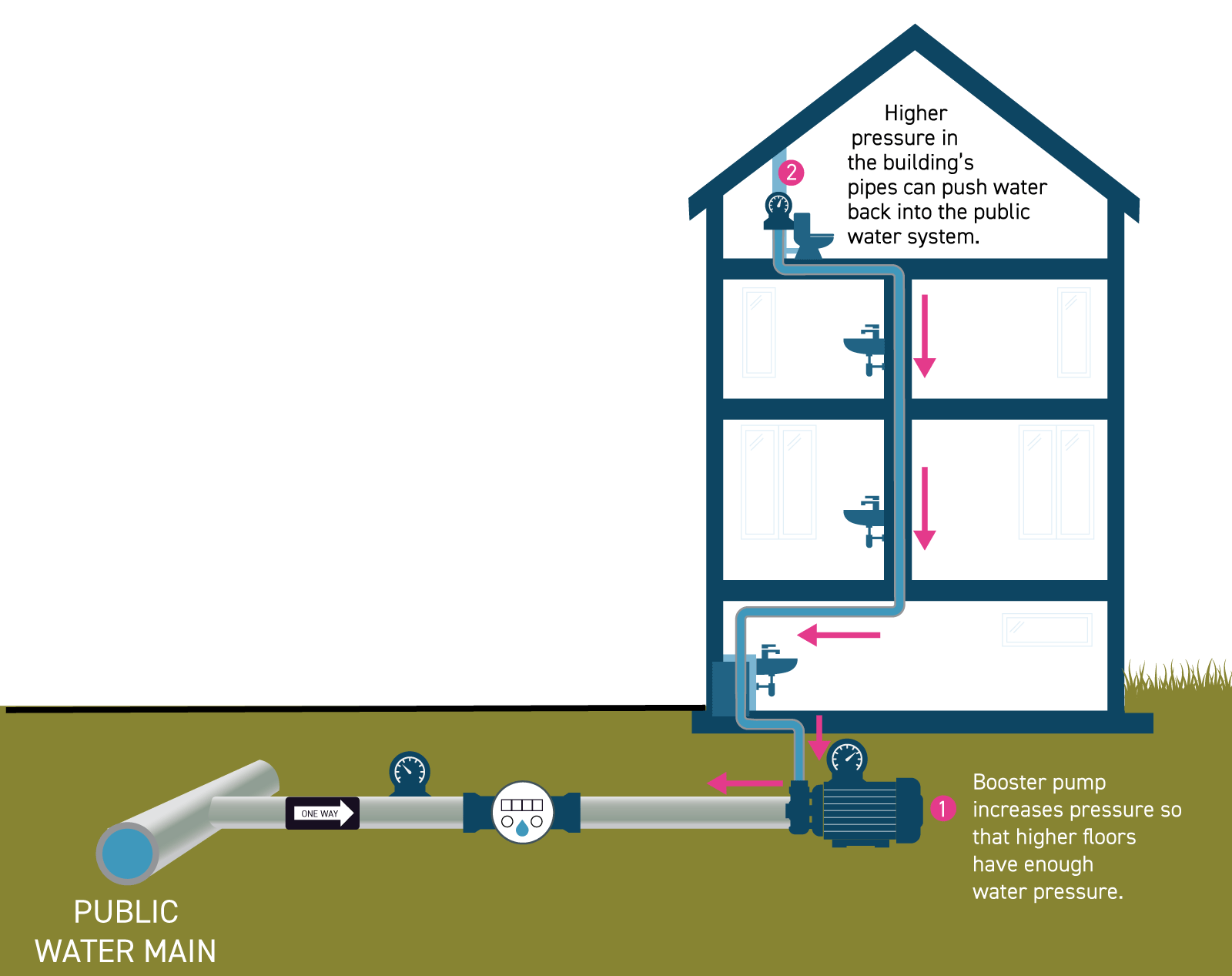Cross-Connection Control Program and Plan
As part of Coastside County Water District’s (District) commitment to delivering safe, reliable, high-quality water to our customers, the District maintains an effective Cross-Connection Control Program and Plan. This program is implemented in accordance with the requirements of the California Cross-Connection Control Policy Handbook. Section W of the District’s General Regulations gives the District authority to implement and enforce its Cross-Connection Control Program and Plan.
-
Section W of the General Regulations
-
Cross-Connection Control Program and Plan
-
California Cross-Connection Control Policy Handbook
Contact Information
For questions regarding these requirements, email backflow@coastsidewater.org
For urgent concerns call 650-276-0799 (Cross-Connection Control Specialist)
Keeping drinking water safe is a shared responsibility between customers (users) of the District’s public water system and the District. Users of the District’s public water system have the responsibility to prevent contaminated water from their private water piping to enter back into the public water system in what is known as a backflow event. The District’s water distribution system is under pressure and that keeps contaminants from entering the water distribution system under normal operating conditions, but certain events may occur, like a hydrant being hit by a car, that can cause a portion of the water distribution system to lose pressure or have a drop in pressure. The drop in pressure makes the water system more vulnerable to a backflow event allowing contamination to enter into the water distribution system.
The District’s method of protection is called containment. The installation of a backflow prevention assembly directly after the service connection between the District’s water distribution system and the premises (private property), contains the water and any contamination that might have occurred on the premises to the premises. This approach is less invasive to the user and the property owner, and it is easily verified and tested.
Protection of the Public Water System by Containment

Installation of Approved Backflow Prevention Assembly Devices
The installation of a backflow prevention assembly will protect the District’s water system from possible contamination. The backflow prevention assembly must be approved by the USC Foundation for Cross-Connection Control and Hydraulic Research and must prevent backflow into the District’s distribution system. The backflow prevention assembly must be lead (Pb) free per state regulations. Type II backflow prevention assemblies are NOT allowed within the District’s service area.
If you are a Coastside County Water District customer and your water service meets the requirements for the installation of a backflow prevention assembly, the District wants to make the process as easy as possible. The following information should help with the process:
- Where are the backflow prevention assemblies installed?
The backflow prevention assembly is installed on the customer’s water service line immediately after (private property side) the water meter box. - Who can install the backflow prevention assemblies?
A licensed contractor, licensed plumber, cross-connection control professional, or the property owner can install the device. - Backflow Prevention Assembly Installation/Testing Information
- Compliance Requirements
After the initial installation, inspection, and testing of the backflow prevention assembly:- The user must maintain the backflow prevention assembly per manufacturer’s specifications.
- The user must not tamper with or bypass the backflow prevention assembly.
- The user must submit annual test results to the District. You will receive a reminder with a current list of certified backflow prevention assembly testers on an annual basis from the District.
Requirements for Backflow Prevention Assemblies
Non-Residential and Multi-Family Service Connections
A backflow prevention assembly must be installed on all non-residential and multi-family service connections, including domestic services, dedicated fire services and dedicated irrigation services. The type of assembly required depends on the hazard level determined by a certified Cross-Connection Control Specialist.
Single Family Residential Water Service Connections
A backflow prevention assembly is required if the premises has conditions on site that pose a threat to the District’s water distribution system. Examples of hazards that pose a threat are fire sprinkler (suppression) systems, an auxiliary water supply, a sewage ejector, hydronic radiant climate control, solar water heating, pool, hot tub, irrigation system, a known cross connection, a storage tank, or other hazards. The District’s Cross-Connection Control Specialist will determine the level of hazard and the type of backflow prevention assembly required.
Water Service Connections for Fire Sprinkler Systems (Fire Service Connections)
All fire services are required to have, at a minimum, a Double Check Backflow Prevention Assembly for protection (DC or DCDA) but a Reduced Pressure Backflow Prevention Assembly (RP or RPDA) may be required based on the hazard level of the premises.
Frequently Asked Questions
A backflow event is an undesired or unintended reversal of flow of water and/or other liquids, gases, or other substances into a public water system’s distribution system or approved water supply.
- Backpressure
When the pressure in a non-potable water source is greater than the pressure in the drinking water system, contaminants from the non-potable water source can be pushed into the drinking water (pipe) system. Buildings four or more stories high with booster pumps may generate backpressure. - Backsiphonage
When there is a sudden drop in pressure in the public drinking water system, such as during firefighting or a water main break, a vacuum or siphoning effect can draw non-potable water from connections with private property and any contaminants present into the public drinking water system.
Cross-connection means any connection (permanent or potential) between the District’s water distribution system and an auxiliary water supply, a pipe or piping system, plumbing fixture, appliance, container, receptacle, vessel or other devices that may allow for contaminated water, fluids, or other substances, other than the water supplied by the District, to enter any part of the District’s water distribution system. Common cross-connections are irrigation systems, pumps (water, sewage or stormwater), fire sprinkler systems, boiler systems, and even garden hoses submerged in water or attached to spray dispensers.
Cross-connection control protects against backflow of non-potable water sources on your property into your drinking water system. This prevents contamination of your drinking water.
Cross-connections can be found in both residential and commercial plumbing systems. Examples of where you can look for cross-connections include:
- hose bibs
- toilet flush valves
- swimming pool fill lines
- space heating boilers
- recirculation or booster pumps
- landscape irrigation systems
- fire sprinkler systems
- secondary source of water such as a private well
Examples of backflow conditions at cross-connections due to pressure differences:


Users that fail to comply with the District’s efforts to enforce its Cross Connection Control Program and Plan, shall have their water service discontinued, until the District’s Cross Connection Control Coordinator determines that the premises is complying and mitigated all hazards to the District’s water system.